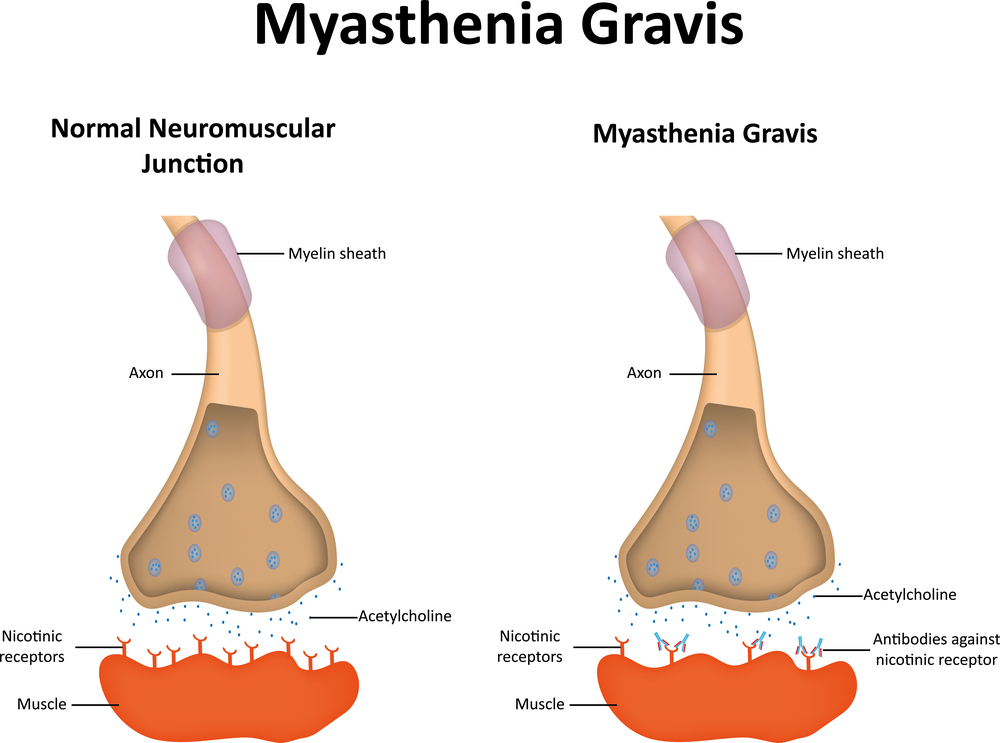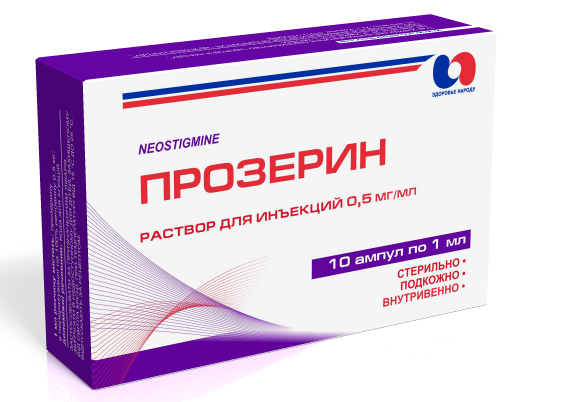Myasthenia gravis is a chronic disease of an autoimmune nature, characterized by the development of a steadily progressive weakness of certain groups of striated muscles. It affects mainly young people - 20-30 years old, but it is also recorded in children and elderly patients. Most of the cases - about 65% - are women.
In the first part of the article on myasthenia gravis, we examined this disease. Here we will talk about diagnostic methods, principles of treatment and prognosis of myasthenia gravis. So, let's begin.

The doctor will suspect the presence of myasthenia gravis in the patient already at the stage of communication with him and an objective examination. Typical complaints (muscle weakness and muscle fatigue, especially after exercise and in the evening; drooping eyelids, double vision, difficulty swallowing, chewing, breathing), hereditary history data (one of the patient's blood relatives suffered from myasthenia gravis) and objective examination (strabismus, live tendon and periosteal reflexes against the background of muscle weakness) will prompt a specialist to think about this particular disease. Having decided on a preliminary diagnosis in order to confirm or refute it, the patient will be assigned additional examinations in the following volume:
- fatigue tests;
- pharmacological tests;
- determination of the presence of antibodies to acetylcholine receptors;
- electromyography;
- computed or magnetic resonance imaging of the mediastinal organs.
Muscle fatigue tests
To determine the degree of fatigue of a particular muscle group, they should be given a load. Repeated clenching and unclenching of the hands will cause weakness in the muscles of the forearm and a more pronounced ptosis of the eyelid. Walking on toes or heels, deep squats will help to reveal weakness in the muscles of the lower extremities. Raising the head for 60 seconds from a supine position will reveal pathological weakness of the neck muscles. In order to diagnose the appearance or increase of ptosis (drooping of the eyelid), the patient looks at one point for half a minute - to the side or up. Thus, the oculomotor muscles are strained and their weakness develops. In the course of the patient's conversation with the doctor, the latter will pay attention to the speech disorder and the nasal tone of his interlocutor's voice.
Pharmacological tests
 The essence of such a test is that the patient is injected with a drug that should improve neuromuscular conductivity, after which they look at the dynamics of the symptoms of the disease. If it is positive - that is, the symptoms of myasthenia gravis regress - the diagnosis is considered confirmed and final. As a rule, for the diagnosis of myasthenia gravis, the patient is injected subcutaneously with a solution of proserin 0.05% or Kalimin 0.05%. Symptoms of the disease significantly decrease or even go away within 30-60 minutes after the injection, and after 2-3 hours they return again.
The essence of such a test is that the patient is injected with a drug that should improve neuromuscular conductivity, after which they look at the dynamics of the symptoms of the disease. If it is positive - that is, the symptoms of myasthenia gravis regress - the diagnosis is considered confirmed and final. As a rule, for the diagnosis of myasthenia gravis, the patient is injected subcutaneously with a solution of proserin 0.05% or Kalimin 0.05%. Symptoms of the disease significantly decrease or even go away within 30-60 minutes after the injection, and after 2-3 hours they return again.
Determination of antibodies to acetylcholine receptors
As we learned from the first part of the article, myasthenia gravis is an autoimmune disease in which the body synthesizes antibodies to the acetylcholine receptors of the postsynaptic membrane. In 9 out of 10 patients with generalized myasthenia gravis, such antibodies are found, in addition, in a third of patients, antibodies to striated muscles are detected. If myasthenia gravis is combined with a tumor of the thymus, antibodies to striated muscles are determined in 8-9 patients out of 10. Even if antibodies to receptors of the postsynaptic membrane could not be detected, but antibodies to striated muscles were found, the diagnosis of myasthenia gravis is considered reliable.
This research method in the diagnosis of myasthenia gravis is very important, since it allows you to investigate the action potentials of a particular muscle. More than 80% of people with generalized myasthenia gravis, and 1 out of 10 patients with the ocular form of the disease, have pathological muscle fatigue.

